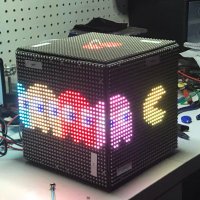
Kathi Ceesay-Seitz
@k_ceesayseitz
Hardware Security Researcher, Ex-CERN Embedded Software Developer / Digital Electronics Verification Engineer
ID: 1555213778
29-06-2013 09:00:03
13 Tweet
47 Followers
390 Following











The first ever end-to-end cross-process Spectre exploit? I worked on this during an internship with grsecurity! An in-depth write-up here: grsecurity.net/cross_process_…